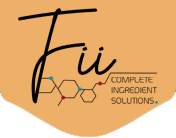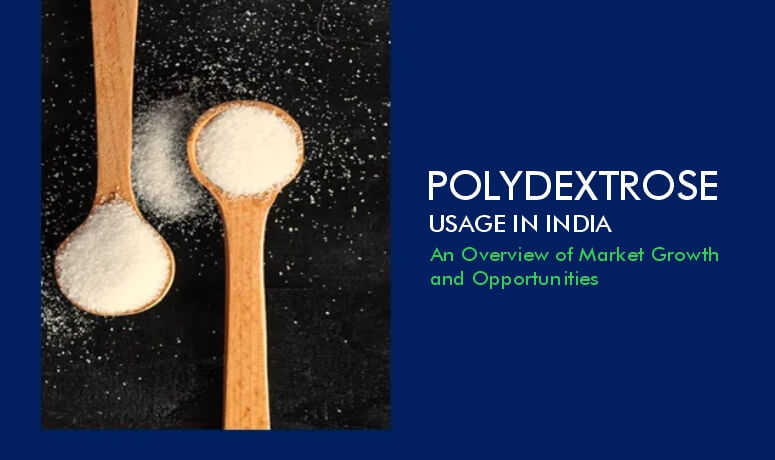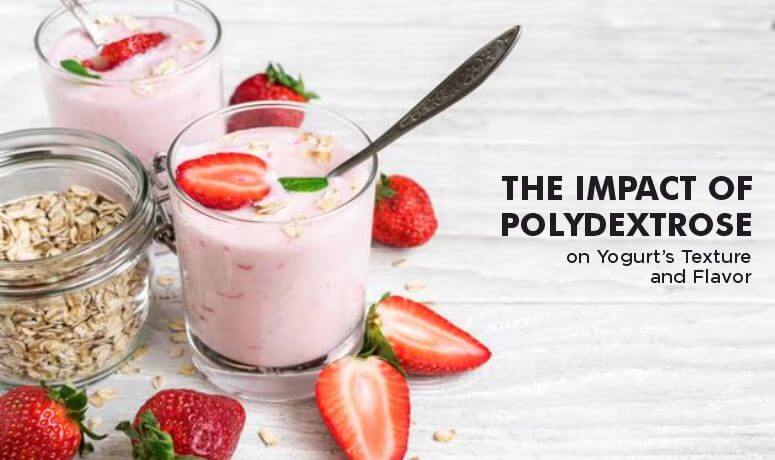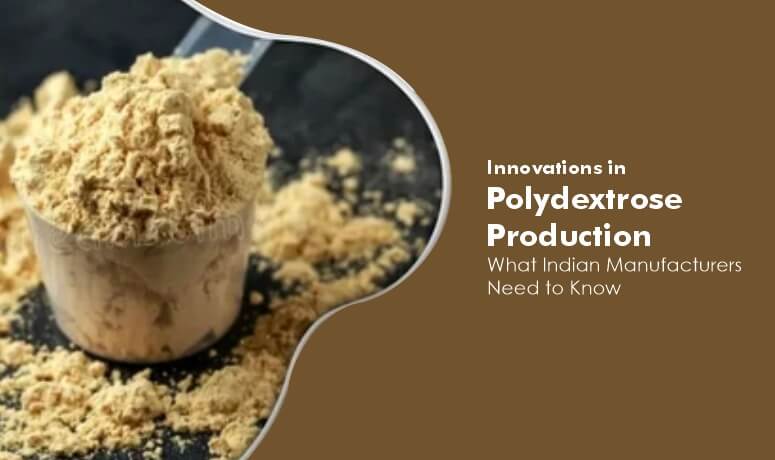The Indian food business is going through a change. Consumer tastes are changing because of a larger population, higher disposable incomes, and more health-conscious people. Indians are no longer just looking for food to fill their plates; they are now actively seeking food that feeds their bodies and fits into their busy lives. This change has allowed new ingredients like polydextrose, a prebiotic fiber with many health and valuable benefits. This blog post has a lot of information about polydextrose in India. It talks about its uses, market potential, exciting possibilities, and problems that need to be fixed.
Understanding Polydextrose: A Boon for Health and Taste
Polydextrose comes from corn and is a liquid fiber that is hard to digest. Think of it as a complex carbohydrate structured like natural fibers but in exciting ways. It has few calories and doesn’t have much of an effect on blood sugar levels, which makes it perfect for people who are watching their sugar intake or who have diabetes. Of course, polydextrose does more than that. Its prebiotic properties feed good bacteria in the gut, which is good for your digestive and general health.
A Culinary Canvas: Applications of Polydextrose in India
Increasing demand for polydextrose in India is due to its flexibility in a wide range of food and drink categories:
1. Sugar Reduction and Diabetic-Friendly Delights:
Polydextrose is a sweetener and binding agent that lets companies lower sugar in baked goods, candies, and drinks. This means that people looking for diabetic-friendly and low-calorie choices can treat themselves without feeling bad about it or giving up the taste or texture they love.
2. Powerhouse Supplements and Functional Foods:
Polydextrose’s prebiotic traits make it a game-changer in functional foods and dietary supplements focusing on gut and digestive health. This group is about to grow as more people learn about the link between the gut and the brain and how important it is to have a healthy microbiome.
3. Creamier, Richer, and Tastier:
Polydextrose can improve the texture and mouthfeel of dairy goods like ice creams and yogurts, making them taste richer and creamier. It can also make products last longer and be more stable, which is suitable for both makers and customers.
4. Beverage Bonanza:
From functional to refreshing, beverages are a boom. Multiple types of drinks, such as low-calorie and useful drinks, use polydextrose. It gives drinks more body and taste and has prebiotic benefits, making it perfect for health-conscious people who want a refreshing and good-for-you drink experience.
Market Growth: A Sweet Future Beckons
There will likely be a lot of growth in the Indian polydextrose market over the next few years. Take a better look at the main things that are causing this growth:
1. The Health-Conscious Revolution:
Indian customers are putting health and wellness first more and more. The prebiotic qualities and sugar-lowering abilities of polydextrose perfectly match this trend, making it a favorite ingredient for food makers who care about health.
2. A Growing Diabetic Population:
There are more and more people in India who have diabetes, which is a significant problem. Insulin resistance and a bigger range of food options are both excellent things for people with diabetes who want to control their blood sugar levels.
3. Urbanization and On-the-Go Lifestyles:
People are eating more convenient foods because cities are growing quickly and people are busy. These foods can have polydextrose added to them to make them healthier and more appealing to health-conscious people who are always on the go.
4. Government Regulations: A Push for Healthier Options:
The Indian government’s efforts to encourage people to eat healthily and reduce sugar intake should positively affect the polydextrose market.
Challenges and Opportunities: A Balanced Perspective
While the polydextrose supplier India offers tremendous potential, there are hurdles to address.
1. Price Sensitivity:
Making healthcare affordable is essential for Indian customers. Manufacturers must find cost-effective polydextrose applications to make them more accessible to a broader audience.
2. Bridge the Awareness Gap:
Educating Consumers, Consumer awareness of polydextrose and its advantages is poor. Educational programs and collaborations with food makers can help increase consumer awareness.
The regulatory landscape is a clear roadmap for innovation. A clear and well-defined regulatory framework for polydextrose use in India would improve clarity and foster innovation in product development.
Despite these challenges, the prospects for polydextrose in India are vast. Here are several promising avenues of exploration.
Unveiling New Horizons: Innovation in Application
The Indian market is a great place to find new ways to use polydextrose. Here are some ways that interested parties can use this chance:
1. Beyond the Familiar: Looking into New Types of Food:
While polydextrose is already well-known in bakery, candy, and dairy goods, adding it to new types of foods like snacks and breakfast cereals can help it reach more people and appeal to a wider range of tastes. Imagine healthy snack bars that taste good and are full of fiber or breakfast foods that make you feel full longer. Polydextrose could be the key ingredient that makes these things possible.
2. Sweet Treats with a Nutritional Punch:
In India, the holiday season is always associated with sweets. Using polydextrose to make diabetic-friendly and health-conscious mithai (traditional Indian sweets) can serve a growing market while keeping cultural practices alive.
3. Customized Solutions: Making Changes Based on Regional Needs:
Food must be made in each area due to India’s varied tastes. Making polydextrose-based products that suit different tastes and eating habits can help the country reach new market groups. For example, it can be a good idea to add polydextrose to famous South Indian breakfast foods like idli and dosa.
The Bottom Line
Polydextrose in India has the potential to change the Indian food business completely. It is a key ingredient for the future because it can improve taste, be good for you, and adapt to changing customer tastes. Stakeholders can unlock polydextrose’s full potential and make Indian food that is both healthy and tasty by tackling problems like price sensitivity, consumer awareness, and rules, as well as by being open to new ways of using it, making functional foods and using sustainable methods. It’s not just about the taste that Indian food will have in the future; it’s also about mindful indulgence, supporting health, and ensuring that future generations will have access to safe and healthy food.






Leave a Reply